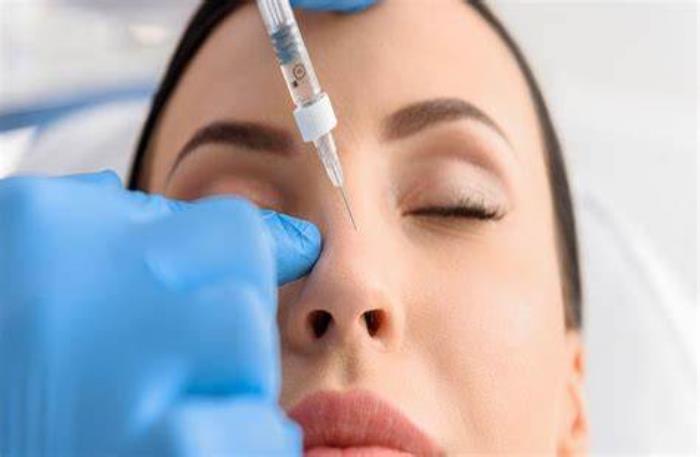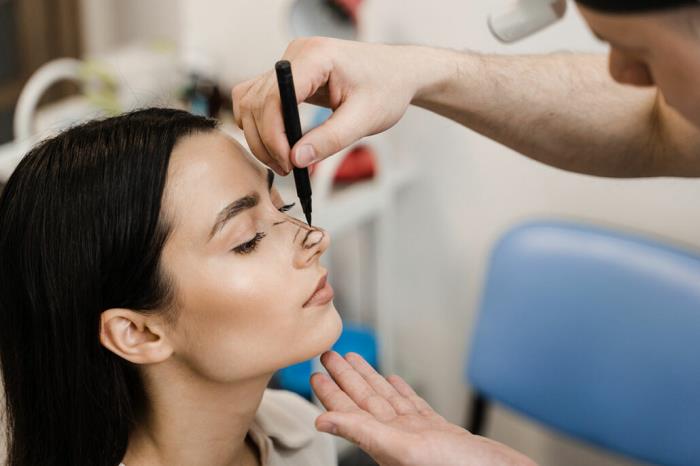Rhinoplasty, often referred to as a nose job, is a surgical procedure designed to enhance the appearance and function of the nose. This procedure can involve reshaping, resizing, or altering the nasal structure to address aesthetic concerns, such as a prominent hump or asymmetry, as well as functional issues that affect breathing. Traditionally, rhinoplasty has been performed as an invasive surgery requiring anesthesia and a recovery period. However, advancements in cosmetic procedures have led to a rise in non-surgical alternatives that offer patients less invasive options to achieve their desired outcomes.
The Rise of Non-Surgical Alternatives in Cosmetic Procedures
In recent years, there has been a significant shift towards non-surgical alternatives in the field of cosmetic procedures. Patients are increasingly seeking options that provide quick results with minimal downtime and lower risks compared to traditional surgical interventions. Non-surgical procedures, including injectables and skin treatments, have gained popularity for their ability to enhance facial features without the need for invasive surgery.

This trend is particularly evident in the realm of rhinoplasty, where non-surgical techniques have emerged as viable options for individuals looking to make subtle changes to their nasal contours. The appeal of these alternatives lies not only in their effectiveness but also in the reduced recovery time, allowing patients to return to their daily activities almost immediately.
Injectable Fillers: Enhancing Nasal Contours Without Surgery
Injectable fillers have become a popular choice for enhancing nasal contours without the need for surgery. These fillers can be strategically injected into specific areas of the nose to correct imperfections such as bumps, indentations, or asymmetry. By adding volume and contour to the nasal structure, fillers can create a more balanced and aesthetically pleasing appearance.
The non-invasive nature of this procedure makes it an attractive option for patients seeking a quick enhancement. Results from injectable fillers typically last several months, providing patients with the opportunity to test the new look before considering more permanent options. As a result, many individuals find injectable fillers to be an excellent alternative to traditional rhinoplasty.
The Role of Hyaluronic Acid Fillers in Non-Surgical Rhinoplasty
Hyaluronic acid fillers play a crucial role in non-surgical rhinoplasty due to their unique properties and versatility. Hyaluronic acid is a naturally occurring substance in the body that provides hydration and volume. When injected into the nose, it can effectively smooth out irregularities and enhance contours, creating a more refined appearance.
These fillers are known for their ability to provide immediate results, making them particularly appealing for patients seeking quick improvements. Additionally, hyaluronic acid fillers are biodegradable, which means they gradually dissolve over time, allowing patients to reassess their aesthetic goals without a long-term commitment. This characteristic makes them a popular choice for individuals considering non-surgical rhinoplasty.
Liquid Rhinoplasty: What to Expect from the Procedure
Liquid rhinoplasty is a non-surgical procedure that utilizes injectable fillers to reshape and enhance the nose. During the procedure, a qualified practitioner will assess the patient's desired outcomes and strategically inject fillers into specific areas of the nasal structure. The entire process typically takes around 15 to 30 minutes and requires minimal downtime.
Patients can expect immediate results, with any swelling or bruising usually subsiding within a few days. It is essential for individuals considering liquid rhinoplasty to consult with an experienced injector to ensure optimal results and minimize risks. While the results are not permanent, liquid rhinoplasty provides an excellent opportunity for patients to achieve their desired nasal contours without undergoing surgical intervention, making it an increasingly popular choice in cosmetic enhancements.
The Benefits of Non-Surgical Options Compared to Traditional Rhinoplasty
Non-surgical options for rhinoplasty offer several advantages over traditional surgical procedures, including minimal downtime, reduced risk of complications, and less invasive techniques. Patients can often achieve subtle enhancements without the need for anesthesia or extensive recovery periods. Furthermore, non-surgical procedures typically allow for more immediate results, making them an appealing choice for those seeking quick fixes.

Nose Thread Lifting: An Innovative Non-Surgical Technique
Nose thread lifting is a cutting-edge non-surgical technique that involves the insertion of biocompatible threads to lift and shape the nose. This procedure can create a more refined appearance, enhance nasal contours, and improve overall symmetry. As a minimally invasive option, it requires only local anesthesia and offers immediate results with minimal downtime.
Using Botox for Subtle Nasal Adjustments
Botox can be employed for non-surgical rhinoplasty to achieve subtle adjustments, such as reducing the appearance of a dorsal hump or refining the nasal tip. By relaxing specific muscles in the nose, Botox can create a more aesthetically pleasing profile without altering the underlying structure. The effects typically last three to six months, making it an excellent choice for those wanting temporary enhancements.
The Impact of Non-Surgical Techniques on Nasal Function
Non-surgical rhinoplasty techniques generally preserve nasal function by avoiding structural alterations to the bone and cartilage. As these methods often involve soft tissue manipulation rather than extensive surgical intervention, patients can maintain optimal breathing function while achieving their desired aesthetic outcomes.
The Limitations of Non-Surgical Rhinoplasty Alternatives
While non-surgical options offer numerous benefits, they also have limitations. These procedures may not provide the same degree of transformation as traditional rhinoplasty, particularly for significant structural changes. Additionally, results are often temporary and may require ongoing treatments to maintain desired effects, leading to potential long-term costs.
Expected Results and Longevity of Non-Surgical Treatments
Results from non-surgical rhinoplasty techniques can vary widely depending on the method used and individual anatomy. For instance, fillers and Botox may last three to twelve months, while thread lifts can provide results for up to two years. Patients should have realistic expectations regarding the longevity of these treatments and be prepared for periodic maintenance.
Costs Associated with Non-Surgical Alternatives
The costs of non-surgical rhinoplasty alternatives can be significantly lower than traditional surgery. However, prices can vary based on the provider, location, and specific treatments chosen. Patients should consider both the initial cost and potential long-term expenses associated with ongoing treatments when evaluating their options.
Risks and Complications of Non-Surgical Rhinoplasty Techniques
Though non-surgical procedures are generally considered safe, they are not without risks. Potential complications may include allergic reactions, asymmetry, or infection. Patients should be aware of these risks and discuss any concerns with their provider before undergoing treatment.
Consultation Process for Non-Surgical Options
The consultation process for non-surgical rhinoplasty typically involves a thorough evaluation of the patient's nasal structure, aesthetic goals, and medical history. Providers may use imaging or 3D simulations to help patients visualize potential outcomes. Open communication about expectations and concerns is essential for achieving satisfactory results.
Choosing the Right Provider for Non-Surgical Rhinoplasty
Selecting the right provider is crucial for successful non-surgical rhinoplasty. Patients should look for qualified professionals with experience in aesthetic procedures, preferably certified in dermatology or plastic surgery. Checking reviews, before-and-after photos, and asking for referrals can help ensure a positive experience and desirable outcomes.
The Importance of Realistic Expectations
Realistic expectations are crucial for patients considering non-surgical rhinoplasty alternatives. While these treatments can yield impressive results, it is important to understand their limitations. Non-surgical procedures are generally best suited for subtle enhancements rather than significant alterations. By discussing desired outcomes openly with their provider, patients can better align their goals with the achievable results, leading to greater satisfaction.
Patient Experiences: Success Stories with Non-Surgical Treatments
Many patients have reported positive experiences with non-surgical rhinoplasty treatments. Success stories often highlight enhanced facial symmetry, improved confidence, and minimal downtime. Patients appreciate the ability to achieve their desired look without the need for invasive surgery. These testimonials can serve as motivation for others considering similar options, showcasing the potential benefits and transformative effects of non-surgical procedures.
How Non-Surgical Options Can Complement Surgical Rhinoplasty
Non-surgical options can serve as valuable complements to surgical rhinoplasty. For instance, fillers may be used post-surgery to refine results, address minor asymmetries, or enhance specific features. Additionally, non-surgical treatments can provide patients with an opportunity to test the look of a potential surgical procedure. By exploring both approaches, patients can achieve a harmonious balance between surgical and non-surgical interventions, enhancing their overall aesthetic outcomes.
Post-Procedure Care for Non-Surgical Rhinoplasty Alternatives
Post-procedure care is essential for ensuring optimal results from non-surgical rhinoplasty alternatives. Patients should follow their provider’s guidelines, which may include avoiding strenuous activities, sun exposure, and certain skincare products for a specified period. Additionally, patients are often advised to apply ice packs to minimize swelling and to monitor for any adverse reactions. Proper aftercare can enhance healing and prolong the results of the treatment.
Understanding the Risks and Complications of Rhinoplasty
Gain insights into the potential risks and complications associated with rhinoplasty. While this procedure can provide significant benefits, it's essential for patients to be aware of factors such as infection, anesthesia reactions, and unsatisfactory aesthetic results, ensuring they make informed decisions.
Best Rhinoplasty Treatment in India
The Best Rhinoplasty Treatment in India is performed by expert surgeons who utilize advanced techniques to ensure optimal outcomes for patients, offering a personalized treatment plan tailored to individual health needs.
Best Rhinoplasty Hospitals in India
The Best Rhinoplasty in India are equipped with cutting-edge technology and facilities, providing top-notch care, including pre-surgery consultations, surgical expertise, and post-operative recovery support to ensure a smooth patient journey.
Rhinoplasty Cost in India
When considering the Rhinoplasty Cost in India, patients benefit from affordable and transparent pricing at leading hospitals, which offer cost-effective treatment options without compromising the quality of care.
Best Rhinoplasty Doctors in India
The Best Rhinoplasty Doctors in India are highly experienced in performing the surgery, utilizing a patient-centric approach that ensures personalized care, precise surgical techniques, and dedicated follow-up care to enhance recovery.
FAQs About Non-Surgical Alternatives to Rhinoplasty
What are the most common non-surgical options for nasal enhancements?
Common non-surgical options include dermal fillers, Botox, and thread lifts. Each technique offers different benefits and can be tailored to meet individual aesthetic goals.
How long do results from non-surgical treatments typically last?
Results can vary depending on the specific treatment. Fillers may last three to twelve months, while thread lifts can provide results for up to two years.
Are non-surgical treatments reversible?
Many non-surgical treatments, like fillers, can be dissolved with hyaluronidase if needed, providing a level of reversibility that surgical options do not offer.
Can I undergo non-surgical treatments after having traditional rhinoplasty?
Yes, non-surgical options can be used to enhance or refine the results of surgical rhinoplasty. However, it's important to consult with a qualified provider to ensure proper timing and safety.
What should I consider when choosing a provider for non-surgical rhinoplasty?
Look for a licensed and experienced provider with a strong background in aesthetic treatments. Reviewing before-and-after photos and patient testimonials can also help in making an informed decision.